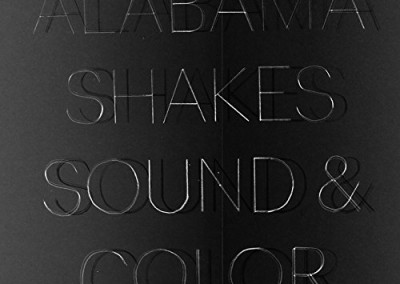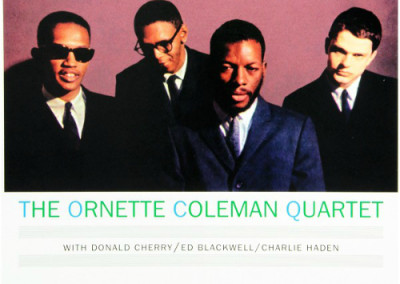
Ron Brenay
Reviewer
Associated Equipment
VPI Classic 2 Turntable
Dynavector 20x2l
Pass Labs XP15
Van Alstine Vison
Maverick Audio Tube Magic D1
AudioQuest Dragonfly
Philips X2 Review (Rons review)
The X2s can be yours for less than $300 at Amazon.com and come with my highest recommendation. They offer an easy to drive solution that adapt to any source you throw at them ranging from your phones output to big rigs with audiophile gear pumping blood to them. The soundstage wide, deep and the exciting tonal signature of the X2s is world class amongst the stiff competition.

Raj Sarma
Reviewer
Associated Equipment
VPI Scoutmaster II Turntable
Denon DL-103R
Parks Audio Budgie Phono / SUT (Tesla PCC88 / Cinemag 1254)
Marantz 2285B Receiver (Preamp)
McIntosh MC7150 Emotiva XDA-1 DAC
Philips X2 (Raj’s Review)
Introduction
There are many reasons why we choose to use headphones, privacy, isolation, portability, sound quality and maybe even to make a fashion statement. Over the years, my reasons for using headphones have comprised of all of the above.
As a young boy I didn’t have the means to either own or listen to music on a high end stereo, so I spent all my allowance on audio cassettes and listened to them on my prized Walkman. Believe it or not, I bought my first pair of “real” headphones from a street vendor in Bombay. Clearly stolen, they were a pair from the business class suite of a British Airlines flight. Up until that moment when I wore those headphones, I’d never experienced my music with such clarity, detail and intimacy. At the time, those headphones sounded really good! I still vividly recall the euphoria and awe of experiencing my music through them. Since then, I’ve not only had the good fortune of moving up the headphone food chain, but also the means to own a decent, high end stereo system. But, to date there are times I’d rather listen to my music on headphones than on my home stereo.
Over the years, having gone through many different headphones, I finally settled (as if there is any such thing for an audiophile!) on a pair of Sennheiser HD600s. I use these headphones primarily for listening at home. Paired with my restored, vintage Marantz 2285B receiver the music through these headphones has always been engaging, vivid and downright entertaining. I felt I’d never want or need anything more…..who was I kidding?!
I’d been intrigued by Philips’ offering of headphones with their Fidelio L1. After reading some reviews online, I decided to buy them. Although they sounded darker and lacked the detail & openness of the HD600, they still sounded great. The fact that they not only looked amazing but also drove easily from my portable devices made them an easy choice as a high quality portable headphone option for my travels as well as daily commute to work. When Philips launched the Fidelio X1, I didn’t really bother with them; I guess I just wasn’t looking. But when the revised X2 was launched and I read about the many improvements, I became curious. Finally, when I read Tyll’s review on Innerfidelity, I couldn’t resist the temptation any more, I had to feel and listen to these for myself.
Build quality & features
The X2 is well packaged, it comes in a large, padded box and includes a 1/4″ adapter, a single 3m long cable and all the customary paperwork that is generally included. When I lifted the headphones out of the box, I was immediately taken by its build quality, this was top-notch! The headband and the ear cups are all metal and finished nicely with what seems like leather on the headband and memory foam and velour ear pads on the ear cups. My HD600 felt a little bit flimsy in comparison and this perception only got worse once I realised how easy it is to actually detach and reattach the ear cups on the X2. This has always been a pet peeve of mine with the HD600. Once the ear cups are removed, not only are they difficult to orient and reattach, but also fail to give a reassuring click or feedback that tells you the cups are in place. The X2 completely eliminates this little niggle and makes it a piece of cake to perform this mundane and simple, yet important function.
The headband seems large enough to accommodate any head size comfortably and utilises a tensioner across it to secure the headphones to your head. There are a few reasons, three to be precise, why I actually prefer a tensioner as opposed to one where the user has to expand or contract the headband by a certain number of clicks on either side. First, it’s a hassle-free approach where nothing has to be pushed, pulled or adjusted, you just wear the headphones. Second, the self adjusting nature makes it easier to share your headphones without having to worry about readjusting them each time they change hands ( if you’re not the sharing type, this is clearly a caveat! ). And last, but not least, there’s no worry of the headband ever breaking or becoming loose due to constant adjustment.
With regards to clamping force, the X2 initially felt a little loose. My head is probably in the small-medium size category, but I’ve never had this issue before. In fact, I’ve found most headphones to be on the tighter side and have had to loosen them up, so I wasn’t sure how to deal with this as I didn’t really see a way to tighten these headphones. The HD600 definitely feels a lot more snug and doesn’t move in case you happen to shake your head ( you know, while head banging and stuff ); the X2 doesn’t give you that same snug feeling. On the flip side, the slightly looser fit actually allows for longer periods of listening without any heat build up, sweating or need for ventilation. With time, I realised that the slightly looser fit is in fact a better approach with regards to long term comfort and usability. I don’t really have a preference here to be honest, sometimes I do wish the X2 fit a little more snug, especially if I’m moving around or lying down. But apart from those specific scenarios, the fit isn’t an issue for me.
The cable on the X2 is well built and finished nicely in a nylon covering, both ends are terminated in gold-plated 3.5mm plugs. However, as is typical of most nylon covered cables, the cable does have a tendency to be slightly microphonic, although not nearly as much as other cables that I’ve used. Using a multimeter I measured the resistance of the cable at just 0.7 ohms, this is a very impressive number for a stock cable, especially of this length. At 3m long, it allows comfortable usage at home and won’t be problematic if you move around to change records, etc. If you decide to use these headphones with a portable device, which isn’t unthinkable thanks to its 32 ohm impedance, you can easily buy a good quality cable of shorter length; I decided to go with a nice 1m long cable from Amazon for just $8.99. For the price, the cable came with gold plated connectors and the measured resistance was just 0.5 ohm. As expected, I didn’t notice any drop in perceived sound quality. Being able to purchase an extra cable without breaking the bank is certainly a nice option. In comparison, the stock cable on the HD600 is very simple with no special finish or covering. In terms of thickness, it seems to be a of a smaller gauge and uses proprietary connectors with separate terminations for each earcup. The big difference between these two headphones is that the HD600’s design allows for balanced mode operation with the right amp, something you cannot achieve with the X2. If this is an important feature for you, the choice here is very straightforward.
Another important design consideration is the impedance of the headphone, at just 32 ohms, the X2 is a very easy headphone to drive. Driving these headphones with both my iPhone & iPad, I didn’t have any issues reaching respectable loudness levels. These headphones, like most other open back, large driver headphones, benefit immensely when driven with a good quality, dedicated headphone amp, but the good news is, they’re absolutely usable with portable devices as well. I particularly appreciated this aspect especially when I wanted to do some light listening while reading. Technically, these headphones won’t pair well with OTL tube headphones amps as they tend to have a high output impedance and that’s where the HD600 will be a better match with its higher impedance of 300 ohms. I didn’t try either of these headphones with OTL tube amps, but I can tell you this, the HD600s sound absolutely lifeless when driven without a dedicated amp. Once again, its horses for the courses, choose wisely depending on your setup.
Sound Quality
Now, for the most important part, the sound! ( feel free to skip this if you’re a beats headphone user…..just kidding. ). Simply put, the X2 is a huge change going from the HD600. And to tell you the truth, in the beginning it’s hard to tell whether this change is for better or worse. Think of it like going from vanilla to chocolate, two drastically different, yet great tasting flavours. The most noticeable change was with respect to the soundstage, the X2 has more of it. I’m a huge fan of Dire Straits, listening to “Six Blade Knife” through the X2 was a revelation. For the first time, I felt like I was listening to this track, not with headphones, but with speakers that gave me the intimacy of headphones. The soundstage wasn’t just wide, which is typical of most open headphones, but also deep. I actually felt a sense of space and separation around the instruments, which truly brought the music to life. The bass on this track is killer and the X2 made sure that the weight of the bass line was delivered with utter conviction. This is very uncommon amongst open back headphones, bass is generally a little lighter and sometimes may feel a little lacking, but the X2 does exceptionally well here.
I’ll be honest though, for someone that’s used to the HD600, the larger soundstage makes the music feel a little bit more relaxed and less energetic. To see if I was truly missing something, I switched back to the HD600 with the same track and the first thing I had to do was turn the volume slightly down. Not because the HD600 was louder, but because it pushed everything a little forward, the soundstage lacked the depth of the X2. Also, the lighter bass gives one the perception of a slightly brighter sound. Going back and forth between these two headphones made me realise one very important thing about the X2, these headphones may not be neutral ( who the hell knows what neutral is anyway?! ), but they have an uncanny knack of getting the sound right! Music sounds just more even keeled and balanced through the X2. And with use I realised this more and more as I could easily go through an entire work day without taking these headphones off; this was a first for me!
But….yes, there’s always a but….it’s not all hunky dory; there is a minor shortcoming with the X2 and its with the treble. Compared to the HD600, the treble has a little more edge to it and lacks the resolution, air and realism of the HD600. On the opening track on Miles Davis – ‘Round about Midnight (RSD 2013, Mono), the saxophone is accompanied by piano & brushed cymbals. The saxophone sounds nice and relaxed and the piano has the right weight, but the cymbals just don’t sound right, it almost felt like dragging a piece of foil on metal. Maybe that’s harsh (no pun intended), but this quality can at times be very noticeable, especially if you listen to a lot of jazz. The HD600, does this a whole lot better, but on the flipside, the forwardness of the lower treble area steals from the ambiance of some recordings.
I also compared the X2 to a pair of Grado SR60e headphones that I regularly use. Given that the Grado is about 1/4th the price of the X2 it should come as no surprise that the X2 handsomely bests the Grado in terms of both build & sound quality. The Grado just couldn’t recreate the soundstage, fluidity and smoothness of the X2 and sounds narrower and harsher in comparison. The Grado also has a tendency to start distorting when it’s pushed hard. The X2 on the other hand, just like the HD600, doesn’t show a hint of distortion even at high listening volumes. But what sets the X2 apart from this bunch is, no matter how loud I played them, not once did I feel the need to lower the volume. An attribute that truly showcases the balanced sound of the X2. Madonna’s Ray Of Light is a highly energetic track with forceful bass, electric guitar and a lot of electronic, cosmic sound effects that pan across channels; playing this track only wants you to keep going louder. Through the X2, I never felt like I hit a ceiling, the more juice I gave it, the louder and more open it sounded, I can’t recall the last time I’ve so thoroughly enjoyed this track.
Summary & Conclusions
By now it should be obvious that I have no reservations recommending the Philips Fidelio X2 headphones. Apart from the minor niggle with its treble response, which is probably going to be noticeable only on certain genres and recordings only to more discerning listeners, the X2 does a lot of things right. The balance with which it presents the music is superbly complemented by its large soundstage. The listener is treated to an experience which truly rivals one of listening to music in a room with high-end speakers. An experience which many headphones strive to deliver, but only a few manage to achieve, especially at this price. I remember a time when one had to spend much higher amounts of money to approach this kind of performance with headphones, the X2 truly sets a new benchmark of both price and performance. Do yourself a favour, buy yourself a pair!
Premium Sponsors












